InFocus IN35W and LiteShow II Wireless Projector Review
InFocus IN35W and LiteShow II Wireless Projector
InFocus' new data projection solution combines great image quality with ultimate connection flexibility.
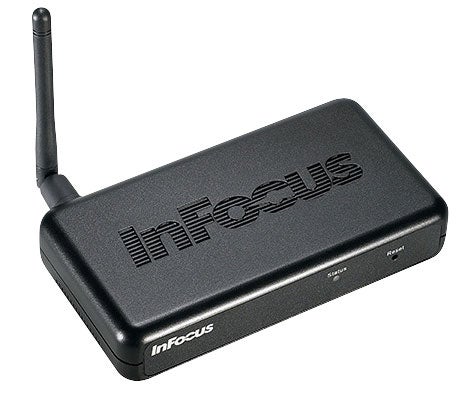
Verdict
Projectors are often used in glamorous home theatre installations, in pubs and clubs to display the football on and at glitzy launch events to display new products in large scale on the wall. But there’s a far more staid side to these workhorse products: more often they’re to be found installed in classrooms and boardrooms, carrying out the mundane task of informing and educating. It’s a job they’re supremely well suited to, allowing the display of huge screens without much bulk, weight or installation effort required.
The problem with installation projectors such as these, especially those in meeting rooms, is that, unless you prepare yourself well in advance, chances are you’ll not know where to plug your laptop in or how to set the projector up when you get there. And if you work in a classroom, the input cable might simply be in the wrong place for your needs. That’s where wireless projection technologies, and the Infocus LiteShow II comes in. Matched here with the new business-specific IN35W projector, it allows you to forget about the VGA cable and instead project your presentation directly over a Wi-Fi link.
It sounds like a brilliant idea, but the first time I came across wireless projection I was pretty underwhelmed. Infocus’ first LiteShow product was 802.11b, wasn’t particularly straightforward to set up, and when connected the on-screen response was sluggish and the limited bandwidth cut video playback out of the equation entirely.
More recently, however, things have been looking up for wireless projection. The Taxan KG-PS125X impressed me with its SDIO-card wireless solution, and now it’s the turn of Infocus’ second LiteShow product. It certainly does a better job than its predecessor. The module itself is more bulky – more like a wireless router than the M1-DA dongle of the previous version – but its 802.11g wireless connectivity means that it’s a far more usable product.
As with the Taxan projector, for instance, it allows it to do a passable job of displaying video clips. Now you won’t be watching full length features or recorded TV programmes on it – it maxes out at a measly 15 frames per second – but it’s just enough to get the idea across. More important, perhaps, is that it’s an absolute doddle to set up. You don’t even need to have the software preinstalled on your PC – you simply point your browser at the LiteShow II’s embedded web server and click a link to download and install software on a local laptop or PC.
Once done it’s very easy to get projecting. The LiteShow manager software takes care of everything without fuss, facilitating the setup of wireless encryption (WEP, WPA and WPA2 are all supported), allowing you to use either infrastructure or ad-hoc networking modes and controlling screen resolution switching, should the need arise.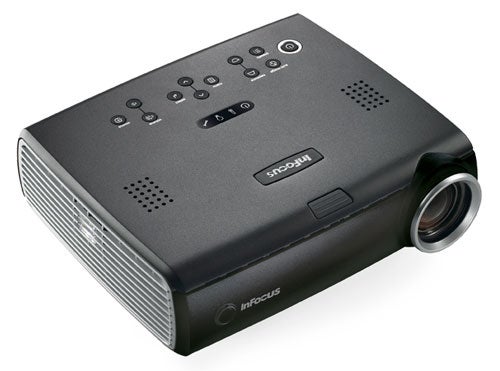
Partner it with the new IN35W projector, however, and you won’t need to do this – it’s the perfect match for the LiteShow II. Sitting at the high end of Infocus’ business projector range, it boasts an impressively high 1,280 x 800 native resolution and although this doesn’t sound that high, in the world of business data projection it’s verging on the exotic. Most business projectors below a grand, even these days, are stuck on 1,024 x 768 or lower, and this when most budget laptops come with screens at least 1,280 x 800, means that you’ll almost always end up having to switch resolutions if you want a crisp, clean projector display. With the IN35W there’s none of this fussing about.
What’s more, with a brightness rating of 2,500 ANSI lumens and a DLP optical engine, the picture is incredibly stable and bright. I saw little evidence of the dreaded rainbow effect, even at large screen sizes, and colours were bright, realistic and natural all at once. It’s easily bright enough for business presentations, and with that resolution and 16:10 aspect ratio it’s also a natural fit for projecting HD video – although not 1080p obviously. It could even double up as an occasional movie projector if you wanted, especially as the M1-DA DVI socket is HDCP compliant. I was less impressed with the optics: the screen distorted at maximum and minimum zoom levels, with a slight bowing at the top and bottom edges, but this is easy to overlook with the rest of the display so impressive.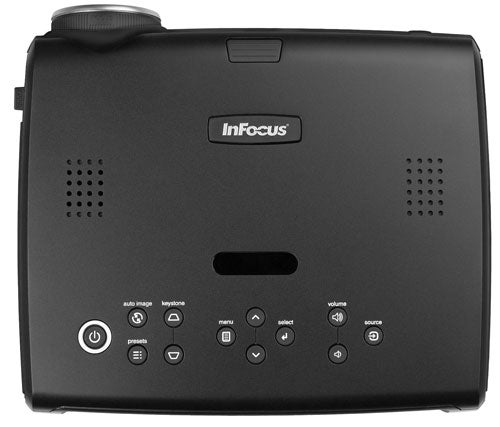
Elsewhere, the IN35W exhibits Infocus’ usual attention to detail. Build quality, for instance, is superb, especially on the focus ring and zoom lever, which makes fine adjustments easy to carry out. The button panel on the top of the projector is well laid out and easy to understand, as is the menu system. The latter boasts a number of useful colour presets, designed to make light work of projecting onto problem surfaces such as beige walls and whiteboards – handy if you plan on carting the IN35W around with you. And this is a possibility, despite the installed projector target market: it may not be the most portable projector in the world, with a minimum throw of 1.85m that isn’t designed for small rooms, but it does come with a shoulder bag and at 2.27kg isn’t that heavy.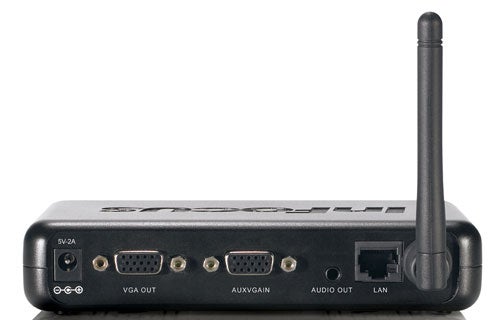
Finally, connections are good too: you’ll find D-SUB inputs and outputs on the rear of the projector, plus a digital input in the form of Infocus’ extended M1-DA socket and there’s also S-Video and composite analogue video connections. The only thing missing, in fact, is component input, but you can add that capability via a VGA adapter cable, so it’s not a huge problem.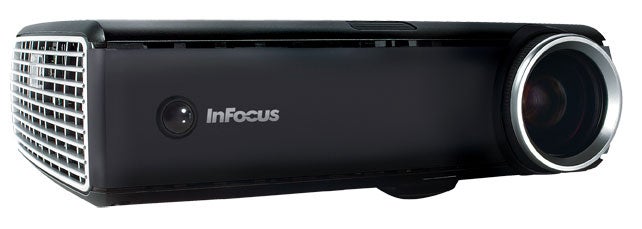
”’Verdict”’
In all, the IN35W and LiteShow II make a highly capable meeting room projector system. The wireless capability and simple software install make it easy for occasional users to hook up to the projector when it’s installed, while the projector itself is highly competent in its own right, boasting excellent build, good features, very good image quality and a modern-notebook-compatible resolution of 1,280 x 800.
It’s not the cheapest wireless projector around – the aforementioned Taxan KG-PS125X is still available, and for around £660 – but when you take into account the higher resolution, the InFocus looks to be a better overall package.
Trusted Score
Score in detail
-
Image Quality 8
-
Value 7
-
Features 8

